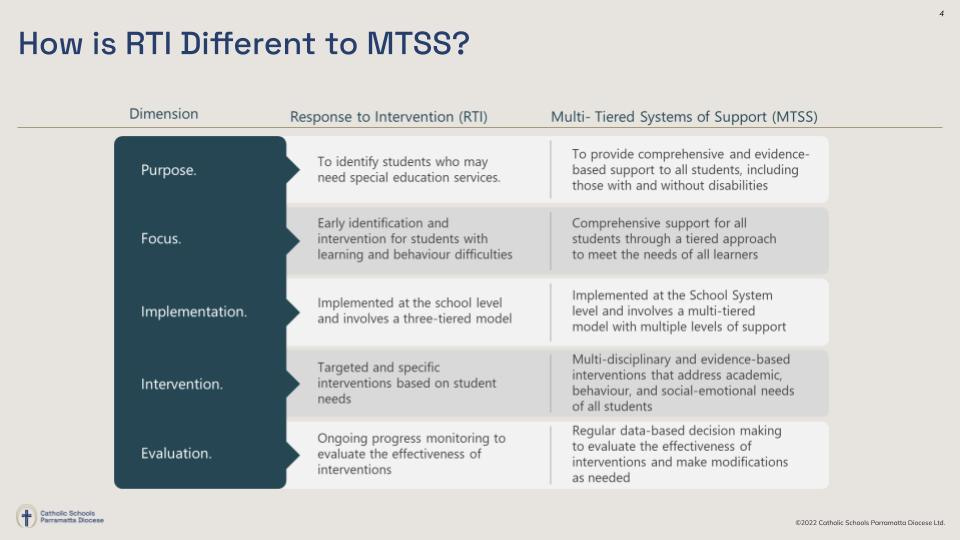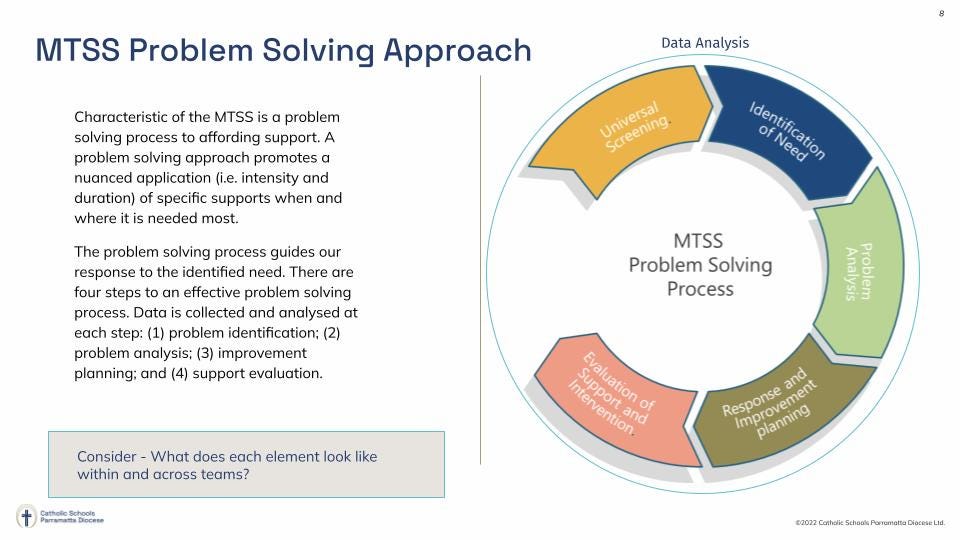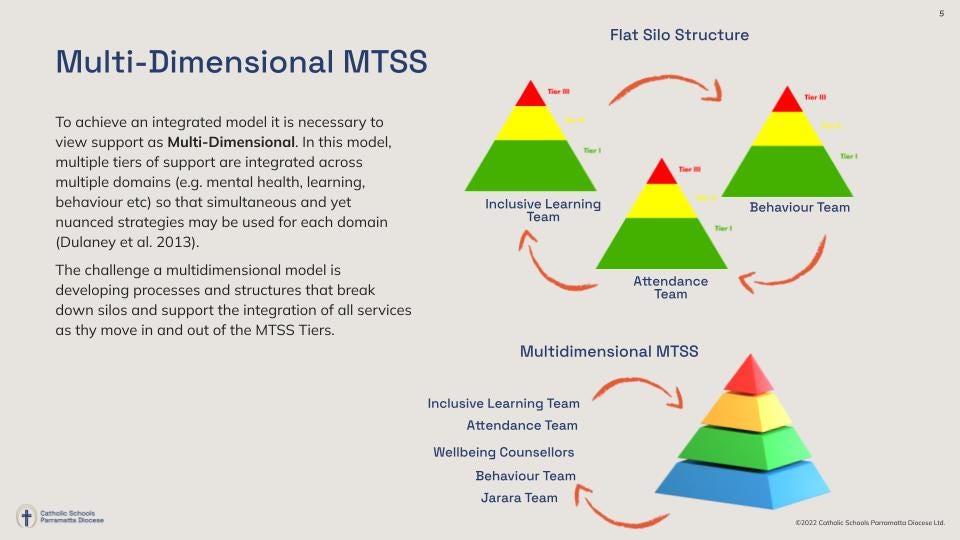Aren't we already doing MTSS?
Leading the paradigm shift from Response to Intervention to Multi-Tiered Systems of Support.
The concept of universal screening, identification and a graduated system of supports as part of a Response to Intervention model has been around for some time. Most schools and systems (including ours) are familiar with the principles of RTI. Therefore, the challenge for many change leaders looking to embed MTSS is not presenting new knowledge but instead guiding stakeholders through the paradigm shift from RTI to multi- dimensional MTSS.
As part of a System initiative to integrate learning and wellbeing services I was invited recently to present on multi- tiered systems of support (MTSS). The thinking from the group of learning and wellbeing leaders was to develop a shared understanding and common language of MTSS so that a system wide MTSS could be developed. There is real wisdom in this approach of seeking shared understanding before running headlong into design. A collective vision is almost impossible without a common language. Recalling the words of Dr. Patricia Graczyk who has written extensively on this topic “you have to go slow to go fast”.
“you have to go slow to go fast”.
One question I received prior to the presentation from one of the leaders was “aren’t we already doing MTSS? The system already has an established RTI framework. Students are identified and learning and wellbeing teams provide support to schools across tiers 1 to 3. However, something missing that was identified by the team was a lack of integration across teams and supports. In other words, learning and support personnel (behaviour, attendance, inclusive learning etc) were often servicing schools and students in parallel. For example, a school would meet with one consultant to support attendance, another to support behaviour and so on resulting in support fatigue from school staff and a duplication of services. Thus, the leaders across teams were seeking an integrated MTSS to reduce duplication and provide targeted supports to all students when and where they are needed.
For those coming to MTSS for the first time - A Multi-Dimensional Multi-Tiered Systems of Support (MTSS) is a comprehensive approach to providing support to all students in a school or System. Unlike traditional MTSS models, which focus primarily on academic and behavioural needs, a Multi-Dimensional MTSS model expands the focus to include additional dimensions, such as social-emotional, mental health, and physical health needs.
A Multi-Dimensional MTSS model may include multiple tiers of support, ranging from universal supports for all students, to targeted and intensive supports for students with more complex needs. Each tier is designed to meet the specific needs of students, while also promoting their overall well-being.
The implementation of a Multi-Dimensional MTSS requires collaboration among multiple disciplines, including teachers, school psychologists, social workers, counsellors, and health professionals. The goal is to provide a comprehensive and integrated approach to support students and improve their outcomes across multiple domains.
So how is MTSS different to RTI?
Whilst there are many differences between MTSS and RTI the one that is salient for me personally is the approach towards supports (i.e. intervention). Supports within a RTI model are targeted and specific to a student’s need. For example, students who present with an attendance problem are provided a standard (often linear) intervention. Experience tells us that intervention will work for some students but not all. Instead of a standard approach, MTSS encourages a nuanced multi- dimensional approach that seeks to first understand a young persons barriers to engagement through a problem solving model and then provides evidence based multi- disciplinary supports.
The second important dimension of an integrated MTSS approach is the integration of supports across tiers of supports. Traditional system learning and wellbeing service models structured around teams structures do serve the purpose of creating specialist supports. However, the unintended outcome of such structures is the formation of service silo’s.
Developing a shared understanding and paradigm shift is the first step towards developing a Multi- dimensional MTSS (perhaps the easy part). The real challenge I outlined to the group was developing cohesion between structures and processes that break down silos and support the integration of all services as they move in and out of the MTSS framework.






